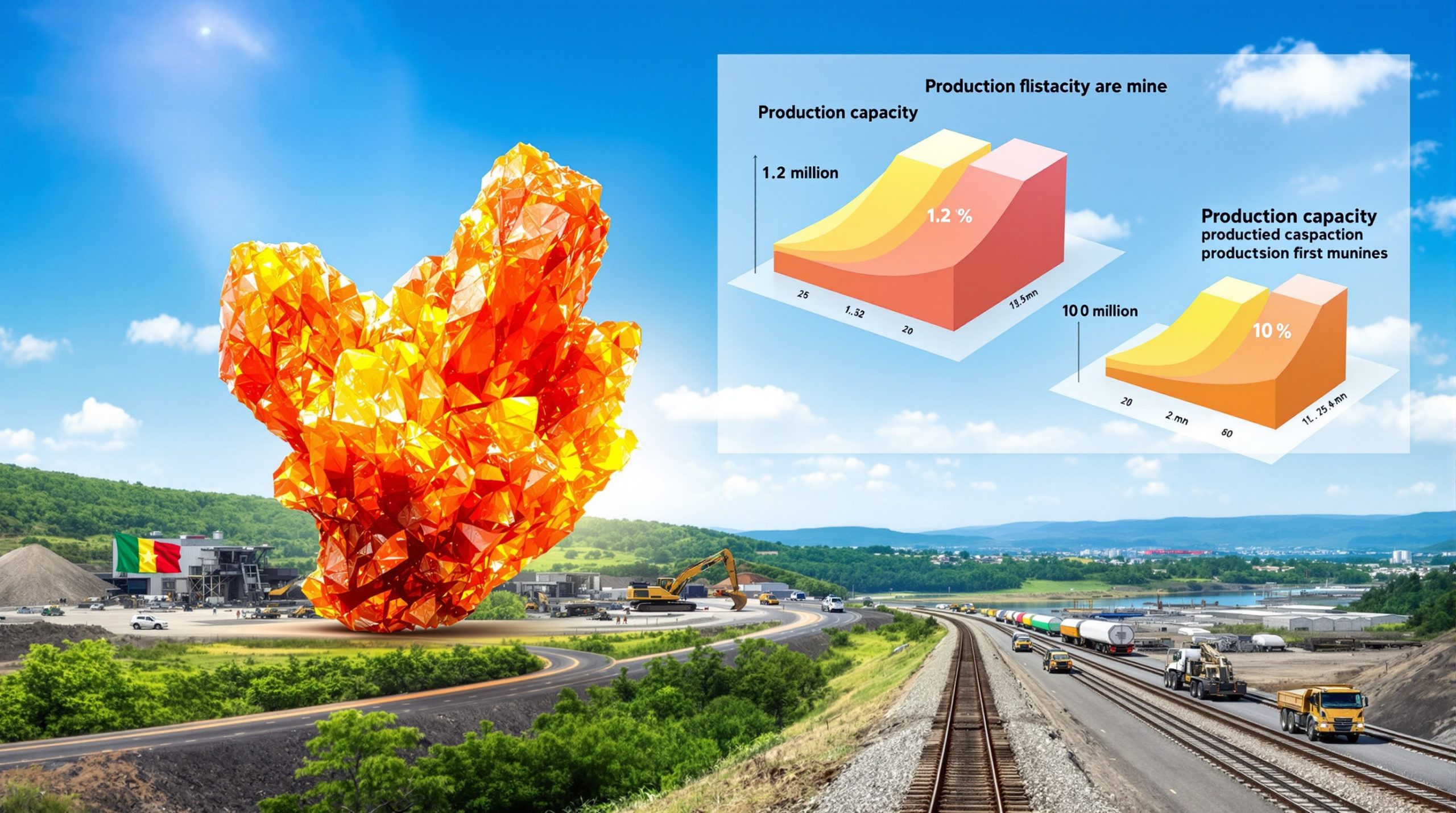Understanding Crude Oil Prices Today: Factors, Trends, and Market Dynamics
Oil markets have been experiencing significant volatility lately, with prices fluctuating based on a complex interplay of geopolitical events, supply-demand fundamentals, and market expectations. This comprehensive analysis examines current price trends, underlying factors, and what investors should watch in today's crude oil market.
What Are the Current Crude Oil Price Trends?
The global oil market has witnessed notable oil price movements recently, with benchmark crudes showing modest gains after substantial declines in previous weeks.
Latest Price Movements and Key Benchmarks
West Texas Intermediate (WTI) crude currently trades at $65.93 per barrel, showing a 1.06% increase from previous sessions. Brent crude, the international benchmark, stands at $68.26 per barrel with a 0.78% gain. Meanwhile, Murban crude is trading at $68.89, reflecting a 0.83% rise.
These modest gains follow a period of significant volatility, with Brent experiencing a dramatic $9 per barrel week-on-week drop from nearly $80 to around $68. This steep decline represents one of the most substantial weekly drops in recent months and highlights the market's sensitivity to changing fundamentals.
"The collapse of geopolitical risk premium has drained oil markets of elevated risk, shifting focus back to supply-demand fundamentals and OPEC+ policy expectations."
– Tom Kool, Oilprice.com
Regional Price Variations
Different oil benchmarks show varying price levels based on quality characteristics and geographic factors. The OPEC basket crude currently trades at $67.99, while Louisiana Light has experienced a significant 4.98% decline to $68.28 in recent sessions.
Premium grades continue to command higher prices despite recent market softness. Nigeria's Bonny Light trades at $78.62 (down 2.84%) while Angola's Girassol stands at $79.56 (down 2.21%). These price differentials highlight how crude quality and accessibility to key markets create persistent pricing disparities even during market downturns.
Why Are Oil Prices Fluctuating?
Several factors have contributed to the recent price volatility, with geopolitical developments playing a particularly significant role.
Geopolitical Risk Premium Evaporation
The recent Israel-Iran ceasefire has dramatically reduced the geopolitical risk premium that previously supported higher oil prices. Market analysts note that oil prices had incorporated a substantial risk premium during heightened Middle East tensions, which has now largely disappeared.
"The lack of retaliatory attacks following the initial conflict has significantly calmed markets," according to energy market analysts. This de-escalation has effectively removed several dollars per barrel from crude pricing, forcing traders to refocus on fundamental supply and demand dynamics.
Middle East Tensions and Risk Assessment
The risk of Middle East oil supply disruption has decreased dramatically to approximately 4%, according to recent market assessments by commodities research firms. This represents a substantial decline from levels exceeding 15% during the height of Israel-Iran tensions.
Oil tanker rates have retreated as regional tensions cool, indicating improved shipping conditions through critical maritime chokepoints like the Strait of Hormuz. This development has positive implications for global oil flows and supply reliability.
Supply Dynamics and OPEC+ Influence
Market attention has shifted decisively to the upcoming OPEC meeting impact scheduled for July 6th, which will be crucial in determining future supply levels. The producer group faces difficult decisions regarding production quotas amid concerns about market oversupply and deteriorating member revenues.
Saudi Arabia has seen its oil export revenue plummet to $16.5 billion (down 21% year-on-year), creating potential fiscal challenges for the kingdom's ambitious Vision 2030 economic diversification plans. This revenue pressure may influence Saudi Arabia's position on production cuts at the upcoming meeting.
How Do Global Events Impact Oil Prices?
Beyond immediate supply-demand fundamentals, several broader events are influencing oil market sentiment and price formation.
Trade Policy Uncertainties
Markets are closely monitoring the July 9th deadline for potential new Trump tariffs impact implementations, which could significantly affect global trade flows and energy demand. Any new trade barriers could disrupt established energy trade patterns, particularly between major economies like the United States and China.
Energy traders are particularly concerned about potential changes to sanctions policies affecting oil-producing nations like Iran and Venezuela. Reports indicate Chinese imports of Iranian crude have reached record highs despite existing international sanctions, highlighting the complex relationship between policy and actual market flows.
Corporate Developments and Market Structure
Recent speculation about potential mergers between major energy companies briefly moved markets before being officially denied. Shell formally refuted market rumors that it was in "early talks" to acquire BP, triggering UK market rules that prevent any such moves for the next six months.
This corporate development highlights how merger speculation, even when unfounded, can introduce volatility into energy markets. The energy sector continues to evaluate consolidation opportunities as companies position themselves for an uncertain future amid energy transition pressures.
Strategic Reserve Management
The U.S. has pushed back its strategic petroleum reserve (SPR) refill timeline by seven months, affecting potential government demand in the market. This adjustment in government purchasing plans provides additional context for near-term price expectations and removes a source of potential buying pressure.
Strategic reserves globally continue to play an increasingly active role in oil market dynamics, with governments using these tools more frequently to manage price extremes and supply disruptions than in previous decades.
What's Happening with Oil Production Globally?
Production developments across major oil-producing regions continue to shape market dynamics and influence price trends.
North American Production Outlook
Canada's oil sands production is projected to reach record highs in 2025, adding significant supply to global markets. This production growth comes despite ongoing environmental concerns and pipeline capacity constraints that have challenged the sector for years.
Meanwhile, U.S. shale producers face workforce challenges that could potentially limit production growth despite available resources. Labor shortages in key basins like the Permian have created operational bottlenecks, with one industry executive noting, "The Permian can't scale if no one's left to work it."
The Trump administration has proposed a massive Gulf of Mexico lease sale for December, covering 80 million acres across 15,000 blocks, while lowering royalty rates to 16.67% from Biden-era levels. This policy shift could significantly impact future U.S. offshore production capabilities, alongside recent changes to Alaska drilling policy.
Middle Eastern Export Dynamics
Saudi Arabia's oil export revenue has plummeted to its lowest level in nearly four years at $16.5 billion (down 21% year-on-year), creating potential fiscal challenges for the kingdom's economic plans. With ambitious projects requiring substantial funding, this revenue decline increases pressure for price stability.
Iran's crude exports to China have reportedly reached record highs despite ongoing international tensions and sanctions. This development highlights the complex reality of sanctions enforcement and suggests greater volumes of Iranian crude reaching global markets than officially acknowledged.
Russian Market Adjustments
Russia is considering a complete ban on gasoline exports to address high domestic prices, which could remove approximately 100,000 barrels per day of light distillate from international markets. Russia's Anti-Monopoly Service has proposed this measure as a way to tackle surging fuel costs within the country.
The country is also exploring alternative uses for natural gas as European sales decline, including powering data centers for AI applications. This strategic pivot highlights Russia's efforts to find new revenue streams as traditional export markets shift away from Russian energy sources.
How Are Supply and Demand Fundamentals Shaping the Market?
Underlying physical market dynamics provide important context for price movements beyond headlines and geopolitical factors.
Inventory Levels and Market Balance
U.S. crude oil prices today are influenced by inventory reports showing significant draws, indicating potential tightening in the physical market. This fundamental indicator suggests underlying strength despite recent price declines and may eventually provide price support if the trend continues.
Inventory draws during a period of price weakness represent a particularly notable market signal, as they suggest physical markets may be tighter than futures prices indicate. This divergence between physical and paper markets warrants close attention from traders and analysts.
Regional Demand Patterns
Recent increases in Asian oil imports may not necessarily signal stronger demand, according to market analysts. This nuance highlights the importance of looking beyond raw import numbers to understand true consumption trends versus inventory building or strategic reserves filling.
China's demand patterns remain particularly difficult to assess, with official data often diverging from observed import and refining activity. Market participants increasingly rely on alternative data sources like satellite imagery of storage facilities and shipping movements to gauge actual consumption.
Infrastructure and Capacity Developments
Several countries are expanding their energy infrastructure to address supply security concerns. Egypt has been maximizing LNG imports to compensate for pipeline disruptions after Israel halted deliveries for two weeks, highlighting the flexibility that LNG provides during supply disruptions.
Iraq is pursuing its first-ever LNG import terminal in partnership with U.S. firm Excelerate Energy, despite being a major gas producer. This seemingly counterintuitive move reflects the country's struggles to capture and utilize its associated gas production, resulting in persistent domestic supply shortages despite abundant resources.
What Should Investors Watch in the Oil Market?
For those with exposure to oil markets, several key factors merit careful attention in the coming weeks and months.
Key Upcoming Market Events
Two critical events will likely define near-term price direction: the OPEC+ meeting on July 6th and the potential implementation of new tariffs on July 9th. These events could introduce significant volatility into the market and potentially establish new trading ranges for major benchmarks.
The OPEC influence 2025 meeting will be particularly crucial as the group evaluates whether to continue, modify, or abandon its current production cut strategy. Saudi Arabia's position will be closely watched given its recent revenue challenges and its traditional role as the group's swing producer.
Production Cost Considerations
Understanding production costs across different regions remains essential for evaluating the sustainability of current price levels. Lower-cost producers maintain profitability even during price downturns, while higher-cost operations face margin pressure when prices fall below breakeven thresholds.
Middle Eastern producers generally maintain the lowest production costs (below $20 per barrel in many fields), while U.S. shale operations typically require $45-55 per barrel to remain profitable. Canadian oil sands projects often need sustained prices above $65 to justify new investments, though existing operations can run profitably at lower levels.
Alternative Energy Competition
The competitive landscape between traditional fossil fuels and alternative energy sources continues to evolve, with infrastructure development for both occurring simultaneously. Nuclear energy is seeing renewed interest, with plans to restart the Three Mile Island plant by 2027 under new ownership.
Renewable energy expansion and electric vehicle adoption rates remain key long-term factors for oil demand projections. Recent EV sales slowdowns in some markets have moderated the most aggressive demand destruction forecasts, but the long-term transition trend remains intact.
Frequently Asked Questions About Oil Prices
What factors determine crude oil prices?
Crude oil prices are determined by a complex interplay of global supply and demand fundamentals, OPEC+ production decisions, geopolitical events, inventory levels, economic growth projections, currency valuations, and increasingly, energy transition policies.
Production costs provide a long-term floor for prices, while supply constraints can establish ceilings during periods of strong demand. Short-term price movements often reflect sentiment and positioning by financial traders rather than immediate physical market changes.
How do different crude oil benchmarks compare?
WTI (West Texas Intermediate) typically trades at a discount to Brent crude due to transportation constraints and quality differences. WTI is lighter and sweeter (contains less sulfur) than Brent, which theoretically should command a premium, but infrastructure limitations at Cushing, Oklahoma often create downward pressure.
Other regional benchmarks like Dubai, OPEC Basket, and various national grades are priced based on their specific characteristics and accessibility to markets. Heavier, higher-sulfur crudes generally trade at discounts to lighter, sweeter grades because they require more complex refining to produce valuable products like gasoline and diesel.
What is the relationship between oil prices and inflation?
Oil prices directly impact transportation costs and indirectly affect the prices of goods and services throughout the economy. When oil prices rise significantly, they can contribute to broader inflationary pressures, though this relationship has weakened somewhat in recent decades.
Economies have become more energy-efficient over time, reducing the inflationary impact of oil price spikes. However, sectors like agriculture, shipping, and manufacturing remain particularly sensitive to energy costs, creating pass-through effects to consumer prices when oil markets surge.
How do seasonal factors affect oil prices?
Oil markets typically experience seasonal demand patterns, with gasoline consumption peaking during summer driving season and heating oil demand rising in winter months. These predictable cycles are factored into market expectations but can still influence short-term price movements.
Refinery maintenance schedules, which typically occur in spring and fall, can also create temporary product shortages and price volatility. Extreme weather events like hurricanes in the Gulf of Mexico or cold snaps affecting natural gas production can create additional seasonal disruptions to energy markets.
Further Exploration:
Readers interested in tracking real-time oil price movements and energy market news can explore educational resources such as Trading Economics, which offers comprehensive coverage of global energy markets and price data.
Want to Identify the Next Major ASX Resource Discovery?
Stay ahead of the market with Discovery Alert's proprietary Discovery IQ model, which instantly notifies investors of significant ASX mineral discoveries and transforms complex data into actionable insights. Explore how historic discoveries have generated substantial returns by visiting Discovery Alert's dedicated discoveries page and begin your 30-day free trial today.




